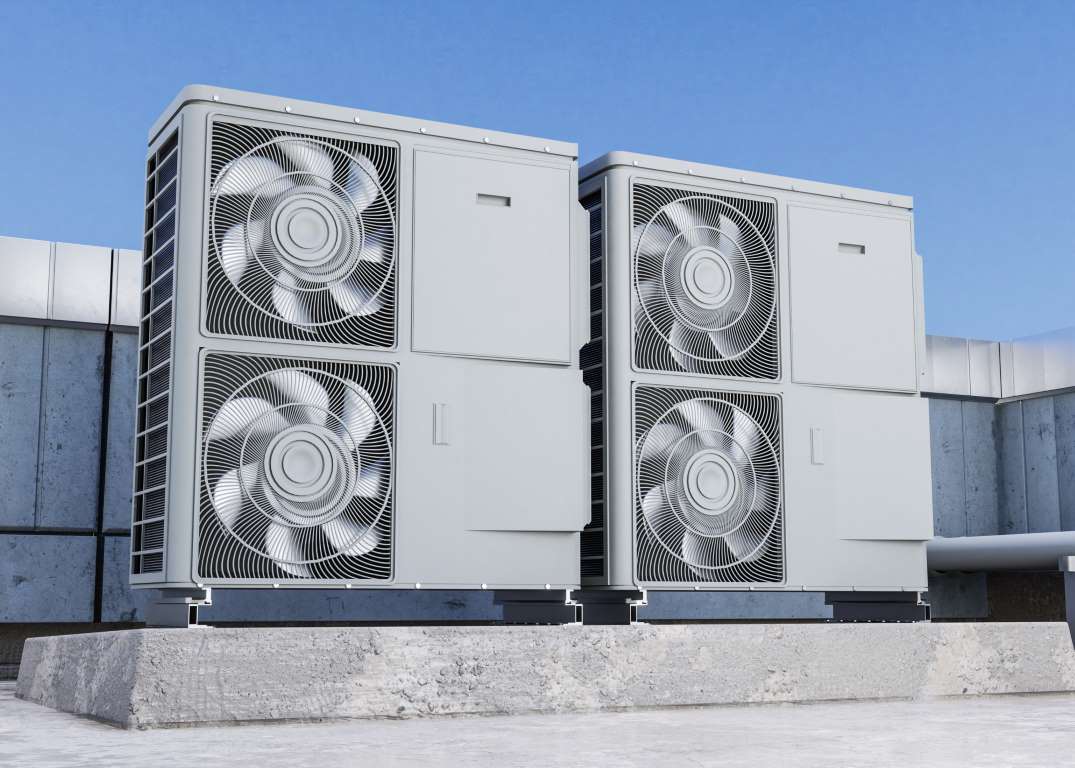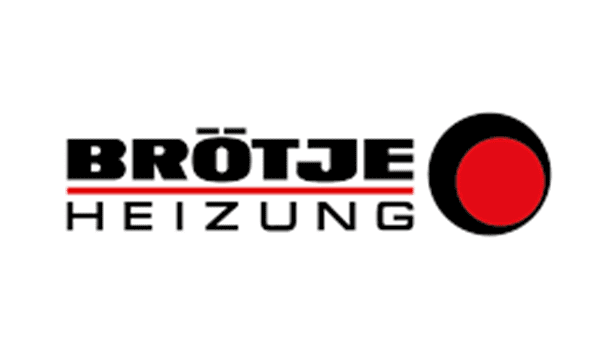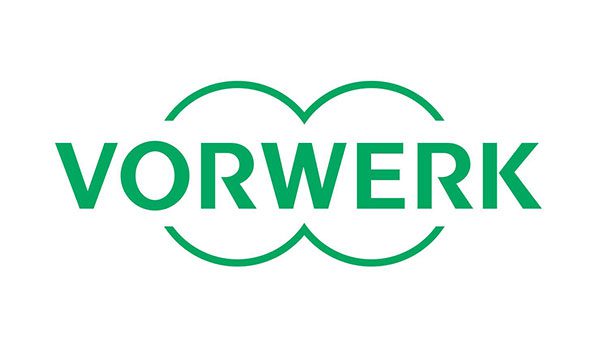Heat pumps have come a long way since their inception in the early 1800s. The technology behind their operation has evolved significantly, allowing for increased efficiency and broader applicability.
Today, heat pumps are widely recognized for their energy-saving capabilities and environmental friendliness.
In this article, you will learn everything you need to know about how heat pumps work including:-
- How heat pumps operate
- The three different types of heat pumps
- The different parts, components and functions of a heat pump
- How to maintain a heat pump
- The life expectancy of heat pumps
- How expensive heat pumps are to run
- General heat pump faqs
- And more..
HOW DO HEAT PUMPS WORK?
A heat pump is a versatile heating and cooling system that transfers heat from one place to another. The primary function of a heat pump is to use electricity to move heat from a warm location to a cooler one, making it an energy-efficient alternative to traditional heating and cooling systems. This heat pump operation involves a cycle of heating and cooling, effectively managing indoor climates in residential homes and commercial buildings.
The heat pump process includes several components working together to transfer heat. In simple terms, it extracts heat from the air (in air-source heat pumps), the ground (in ground-source heat pumps), or water (in water-source heat pumps) and moves it to where it’s needed. This heat pump function is beneficial not only for heating in the winter but also for cooling in the summer.
Heat pumps come in various types, each suitable for different environments and needs, including air-source, ground-source, and water-source heat pumps. Understanding what is the function of a heat pump helps in appreciating its role in energy efficiency and climate control.
ARE THERE DIFFERENT TYPES OF HEAT PUMPS?
Heat pumps are an efficient and eco-friendly way to heat homes by drawing heat from various sources. There are three main types of heat pumps based on the source of heat they use: air-source heat pumps, ground-source heat pumps, and water-source heat pumps. Each type has its own advantages and applications depending on the local climate and heating needs.
- Air source heat pumps, which draw heat from the outdoor air, are the most common type of heat pump. They are easy to install and work well in moderate climates. The two main types of air-source heat pumps are air-to-air and air-to-water. Air-to-air heat pumps provide heat for indoor spaces, while air-to-water heat pumps are often used to heat radiators, underfloor heating, and hot water for a home.
- Ground source heat pumps, also known as geothermal heat pumps, draw heat from the ground via a system of underground pipes filled with refrigerant. They are more expensive to install than air-source heat pumps but are much more efficient and work well in colder climates. There are two main subtypes of ground source heat pumps: horizontal and vertical. Horizontal heat pumps have pipes buried in trenches, while vertical heat pumps have pipes drilled deeper underground.
- Water source heat pumps draw heat from a nearby body of water, such as a lake or river, using a system of underground pipes. They are very efficient and provide a constant temperature but require a nearby source of water. Two main subtypes of water source heat pumps are open and closed loops. Open-loop heat pumps draw water directly from the source, while closed-loop heat pumps use a system of underground pipes filled with water or antifreeze to transfer heat.
When considering which type of heat pump to install and whether it will be able to heat the whole house, it’s important to consider several factors, including the local climate, house size, and budget. It’s also important to choose a reputable heat pump supplier and consider the specific heating needs of the home, such as whether underfloor heating or radiators are needed.
In summary, heat pumps are an efficient and eco-friendly way to heat homes using various heat sources. When choosing a heat pump, consider factors like the local climate, garden size, budget, and specific heating needs of the home.
HEAT PUMP COMPONENTS & OPERATION
A heat pump is an energy-efficient alternative to traditional heating and cooling systems. It functions by transferring heat from one location to another, depending on the season or desired temperature. The system consists of various heat pump components working together for maximum efficiency. Understanding the components of a heat pump system and their roles is crucial for appreciating how it operates.
This article will discuss the different heat pump parts and functions, providing insight into how each element contributes to the overall heat pump operation. Key heat pump components and functions include:
INDOOR UNIT
The indoor unit of a heat pump is a critical component responsible for distributing the conditioned air throughout your home. It contains an evaporator coil, a blower fan, and various controls. The evaporator coil plays a vital role in absorbing heat from the indoor air when the heat pump is in cooling mode or releasing heat into the indoor air during heating mode. As air passes over the coil, the refrigerant within absorbs or releases heat, depending on the cycle, thereby regulating the indoor temperature.
The blower fan in the indoor unit ensures that the conditioned air is efficiently circulated throughout the space. It draws air in from the room, passes it over the evaporator coil, and then pushes the conditioned air back into the living space. The indoor unit also houses the control systems that manage the operation of the heat pump, ensuring it operates efficiently and maintains the desired temperature.
Overall, the indoor unit is essential for maintaining indoor comfort, effectively distributing warm or cool air as needed, and ensuring the system operates smoothly. Proper maintenance of the indoor unit, including regular cleaning of the coils and fan, is crucial for the optimal performance of the heat pump system.
OUTDOOR UNIT
The outdoor unit of a heat pump is equally important and works in conjunction with the indoor unit to regulate indoor temperatures. It primarily contains the compressor, condenser coil, and a fan. The compressor is responsible for pressurizing the refrigerant and circulating it between the indoor and outdoor units. This process is essential for the heat transfer cycle that allows the heat pump to provide heating and cooling.
In the outdoor unit, the condenser coil releases heat absorbed from the indoor environment to the outside air during cooling mode. Conversely, in heating mode, the condenser coil absorbs heat from the outdoor air, even in cold temperatures, and transfers it to the refrigerant. The fan in the outdoor unit aids in this heat exchange process by ensuring that air flows over the condenser coil efficiently.
The outdoor unit is designed to withstand various weather conditions and operates year-round. Regular maintenance, such as clearing debris and ensuring proper airflow around the unit, is essential for its efficiency and longevity. By understanding the functions and maintenance requirements of the outdoor unit, homeowners can ensure their heat pump system operates efficiently, providing comfort throughout the year.
COMPRESSOR
The compressor is an essential component in an air source heat pump. It plays a crucial role in the heat pump’s operation by pressurizing the refrigerant and circulating it throughout the unit. To understand how a heat pump compressor works, it is important to recognize its function within the system.
When the refrigerant enters the compressor, it is in a gaseous state. The compressor then starts to exert a force on the gas, compressing it, which increases the pressure and temperature of the refrigerant. This compression of the refrigerant gas is what creates the energy needed to drive the heat pump process. This is one of the critical functions of the compressor, illustrating how a heat pump compressor works.
The high-pressure gas, resulting from the compression, is then sent through the heat exchanger or condenser located indoors, where the heat transfers to the indoor air or water. As the high-pressure gas enters the condenser, it condenses back into a liquid state, releasing the absorbed heat to the indoor environment. The cooled refrigerant then travels back through the evaporator and to the compressor, where the cycle continues.
In summary, the compressor is responsible for pressurizing the refrigerant and moving it throughout the air source heat pump. It performs the critical function of compressing the refrigerant gas, which creates the energy required to run the heat pump process. Understanding the role of the compressor is essential to comprehend how a heat pump compressor works and how an air source heat pump operates.
CONDENSER
The condenser receives the gaseous refrigerant from the compressor and is responsible for exhausting the heat from the refrigerant to the surrounding environment. Typically, an outdoor unit is used to release the heat that is absorbed from the evaporator and compressed by the compressor.
To understand how a heat pump condenser works, the process of heat exhaustion in the condenser results in the refrigerant being cooled and condensed back into a liquid state. This condensation process is vital to the proper functioning of the heat pump system.
In summary, the condenser is an essential component of a heat pump system. Its primary function is receiving gaseous refrigerant from the compressor and converting it into a liquid state through heat exhaustion. This process plays a critical role in efficiently transferring heat from one location to another.
EXPANSION VALVE
The expansion valve is a necessary part of the heat pump system. It serves as a heat pump metering valve to regulate refrigerant flow and facilitates the pressure and temperature reduction required for proper heat pump operation.
The expansion valve in a heat pump controls the refrigerant flow by acting as a narrow passage that reduces the pressure and temperature of the refrigerant. When the refrigerant enters the expansion valve from the high-pressure liquid line, it passes through a tiny orifice, restricting the flow and reducing its pressure. Once the refrigerant passes through the expansion valve, it enters the low-pressure side of the system, where it experiences a significant drop in temperature. This process is essential because it enables the refrigerant to absorb heat from the outdoor unit and transfer it to the indoor unit in the heating mode.
The expansion valve plays a critical role in ensuring that the heat pump operates efficiently. Without this heat pump metering device, the refrigerant would flow freely through the system, resulting in an inadequate temperature and pressure reduction. This would cause the heat pump to operate inefficiently, leading to high energy consumption, expensive operating costs, and increased environmental impact due to carbon emissions.
In summary, the expansion valve is an important part of the heat pump system. It regulates the refrigerant flow, resulting in a decrease in pressure and temperature. This allows the heat pump to function effectively, minimizing operational expenses and environmental impact. For systems with specific requirements, one might ask, do heat pumps have two expansion valves? Typically, most systems use a single expansion valve, but configurations can vary based on design and application.
EVAPORATOR COIL
The Evaporator Coil is a necessary element in a heat pump system. The Evaporator Coil functions together with other components, such as the compressor, condenser, and fan, to ensure efficient heating and cooling. It’s responsible for absorbing heat from the air and transferring it to the refrigerant.
When warm air is drawn into the heat pump by the fan, it passes over the Evaporator Coil. The heat from the air is transferred to the refrigerant, causing it to convert from a liquid to a gas. This process is known as heat transfer. The evaporator coil is designed to facilitate this heat transfer process, ensuring maximum efficiency in the heat pump system.
The Evaporator Coil absorbs heat from the air and releases it through the condenser during the heat transfer process. The refrigerant is responsible for carrying the heat to the condenser, where it is then released into the environment. The process repeats continually to maintain a constant temperature inside the house.
There are two common types of Evaporator Coils – fin and tube and plate types. The fin and tube type is the most widely used and is suitable for most residential and commercial applications. It comprises thin tubes connected to a network of fins, allowing maximum heat transfer. The plate type, on the other hand, is used in specialized applications where space is limited.
In conclusion, the Evaporator Coil plays a vital role in operating a heat pump system. Its ability to absorb heat from the air and transfer it to the refrigerant allows for efficient heating and cooling, ultimately resulting in lower operating costs and a reduced carbon footprint. Regardless of the type of Evaporator Coil used, its function remains the same – to facilitate heat transfer and maintain a constant temperature inside the home.
REVERSING VALVE
The reversing valve plays a crucial role in operating a heat pump system by allowing it to switch between cooling and heating modes. Understanding how a heat pump reversing valve works is key to appreciating its function in maintaining indoor comfort. This is done by reversing the flow of the refrigerant, which absorbs heat from the surrounding air or ground, depending on the type of heat pump, in order to maintain a comfortable temperature indoors.
When the heat pump is switched to heating mode, the reversing valve allows the refrigerant to flow through the outdoor unit’s coil or the ground-source heat pump’s loop system. The refrigerant absorbs heat from the outside environment, which is then transferred to the indoor unit, where it is released to warm the air. By reversing the refrigerant flow, the heat pump can effectively extract heat from the outside and transfer it inside to keep the home cozy and warm.
When the reversing valve is switched to cooling mode, the refrigerant flows in the opposite direction. For instance, it absorbs heat inside the home, transferring it outside to maintain a comfortable temperature. This illustrates how a reversing valve works in maintaining temperature control inside the home, ensuring that homeowners receive year-round comfort.
In conclusion, the reversing valve is a vital component in the heat pump system’s operation, responsible for allowing the heat pump to switch between heating and cooling modes. It reverses the refrigerant flow, allowing the heat pump to absorb heat from the surrounding environment, transfer it to the indoor unit, or release it outside. The reversing valve plays a crucial role in keeping the temperature inside the home regulated, ensuring a comfortable living environment.
Maintaining a heat pump is essential to ensure its efficiency and longevity. Here are some key steps for proper maintenance:
1. Regular Inspections
- Frequency: Conduct inspections at least twice a year, ideally in the spring and fall.
- Check for leaks: Inspect for refrigerant leaks and seal them if found.
- Inspect components: Examine the ducts, filters, blower, and indoor coil for dirt and obstructions.
2. Clean or Replace Filters
- Frequency: Clean or replace filters every 1-3 months, depending on usage and manufacturer recommendations.
- Procedure: Remove the filter, clean it with water if reusable, or replace it with a new one.
3. Clean Coils and Fins
- Frequency: Annually, or as needed based on environmental conditions.
- Procedure: Use a garden hose to clean the outdoor unit’s coils and fins. Be gentle to avoid bending the fins.
4. Check Thermostat Settings
- Ensure: The thermostat is set to a comfortable temperature and is functioning correctly.
- Consider: Installing a programmable thermostat to optimize efficiency.
5. Inspect the Condensate Drain
- Frequency: Periodically check to ensure it is clear of debris.
- Procedure: Use a wet/dry vacuum to clear any blockages in the drain line.
6. Clear the Area Around the Outdoor Unit
- Ensure: There is at least 2 feet of clearance around the outdoor unit.
- Remove: Any leaves, grass, or debris that might obstruct airflow.
7. Check for Proper Refrigerant Levels
- Hire a Professional: Only a certified technician should check and adjust refrigerant levels.
- Frequency: During bi-annual inspections.
8. Lubricate Moving Parts
- Frequency: Annually, during a professional service visit.
- Purpose: To reduce friction and wear on components.
9. Inspect Electrical Connections
- Frequency: Annually.
- Procedure: Check for loose connections and tighten as needed. Inspect for signs of wear or damage.
10. Schedule Professional Maintenance
- Frequency: Annually.
- Services: A professional technician can perform detailed checks, cleanings, and adjustments to ensure optimal performance.
Additional Tips:
- Monitor System Performance: Be aware of any changes in heating or cooling efficiency and unusual noises.
- Energy Usage: Track energy bills for unexpected increases, which could indicate a problem with the heat pump.
Regular maintenance not only improves the performance of a heat pump but also extends its lifespan and ensures efficient operation.
WHAT IS THE LIFE EXPECTANCY OF A HEAT PUMP?
ARE HEAT PUMPS EXPENSIVE TO RUN?
Switching to an air-to-air heat pump can lead to significant savings on heating and cooling bills. Heat pumps are highly efficient, potentially saving homeowners $500 to $1,000 annually compared to electric resistance heating, $900 compared to oil furnaces, and $850 compared to propane systems. Their efficiency can reduce energy costs by up to 50%. Additionally, rebates and incentives can offset installation costs, enhancing their cost-effectiveness.
Apart from the upfront cost, which can range from $4,000 to $12,000 depending on the size, brand, and efficiency of the unit, the long-term savings are substantial. Source: (RefreshHVAC) (HomeGuide) (HomeGuide)
FINAL WORDS
In summary, a heat pump extracts heat energy from the air, ground, or water sources and transfers it inside or outside a building to provide heating or cooling. Heat pumps come in various types, such as air source, ground source, and water source, and can be used with heating systems like underfloor and central heating.
Heat pumps are an energy-efficient option as they use minimal electricity to move heat rather than burning fuel. They are also eco-friendly as they don’t produce any carbon emissions and can use renewable energy sources like solar energy. They can also help reduce energy bills and operating costs since they can provide heating and cooling with a single unit.
In conclusion, heat pumps are an excellent choice for those looking for an energy-efficient, eco-friendly, and cost-effective option to heat and cool their space. By understanding how they work and the benefits they offer, individuals and businesses can make informed decisions regarding heating and cooling.







































